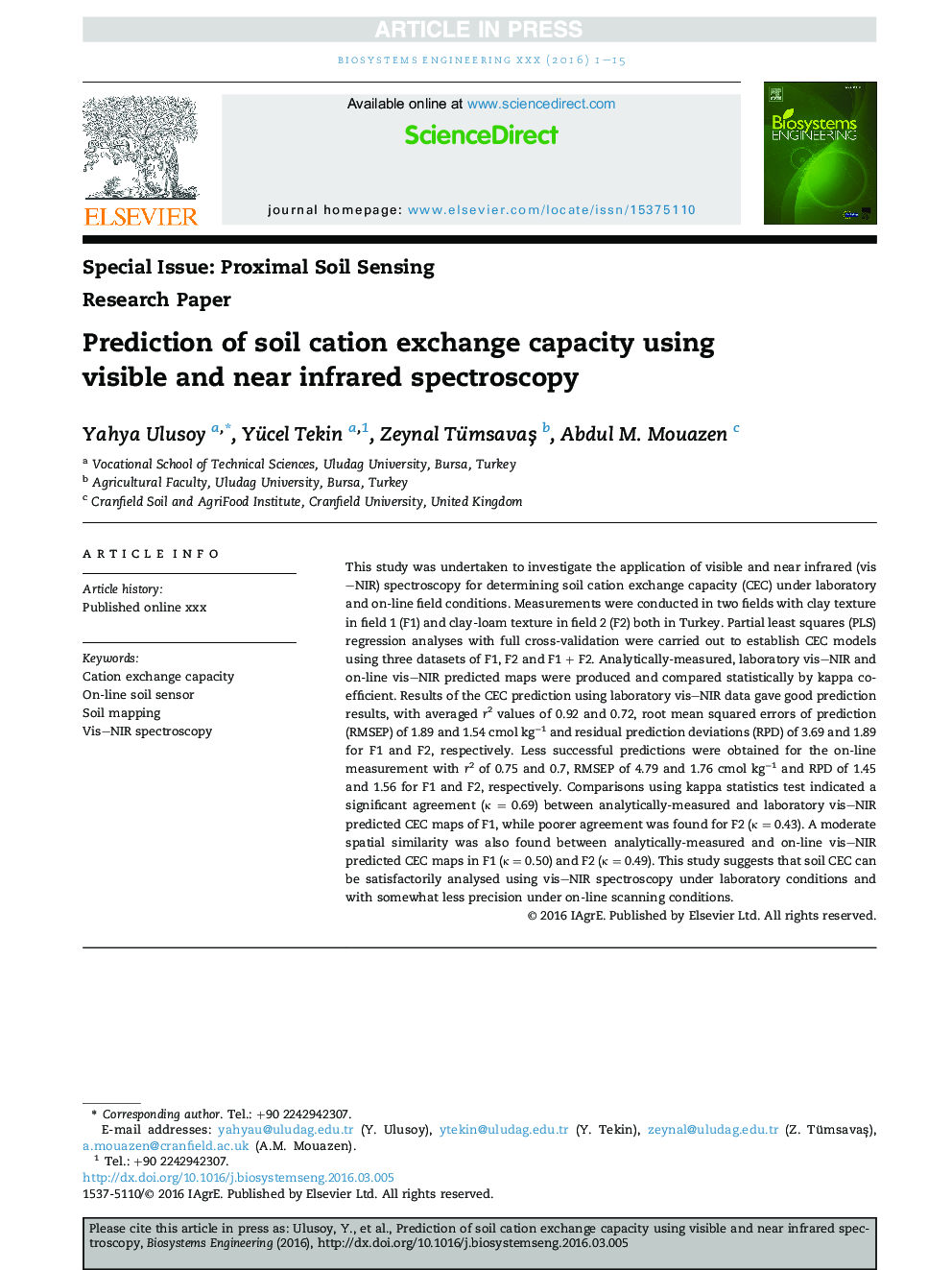| Article ID | Journal | Published Year | Pages | File Type |
|---|---|---|---|---|
| 5471963 | Biosystems Engineering | 2016 | 15 Pages |
Abstract
This study was undertaken to investigate the application of visible and near infrared (vis-NIR) spectroscopy for determining soil cation exchange capacity (CEC) under laboratory and on-line field conditions. Measurements were conducted in two fields with clay texture in field 1 (F1) and clay-loam texture in field 2 (F2) both in Turkey. Partial least squares (PLS) regression analyses with full cross-validation were carried out to establish CEC models using three datasets of F1, F2 and F1 + F2. Analytically-measured, laboratory vis-NIR and on-line vis-NIR predicted maps were produced and compared statistically by kappa coefficient. Results of the CEC prediction using laboratory vis-NIR data gave good prediction results, with averaged r2 values of 0.92 and 0.72, root mean squared errors of prediction (RMSEP) of 1.89 and 1.54 cmol kgâ1 and residual prediction deviations (RPD) of 3.69 and 1.89 for F1 and F2, respectively. Less successful predictions were obtained for the on-line measurement with r2 of 0.75 and 0.7, RMSEP of 4.79 and 1.76 cmol kgâ1 and RPD of 1.45 and 1.56 for F1 and F2, respectively. Comparisons using kappa statistics test indicated a significant agreement (κ = 0.69) between analytically-measured and laboratory vis-NIR predicted CEC maps of F1, while poorer agreement was found for F2 (κ = 0.43). A moderate spatial similarity was also found between analytically-measured and on-line vis-NIR predicted CEC maps in F1 (κ = 0.50) and F2 (κ = 0.49). This study suggests that soil CEC can be satisfactorily analysed using vis-NIR spectroscopy under laboratory conditions and with somewhat less precision under on-line scanning conditions.
Related Topics
Physical Sciences and Engineering
Engineering
Control and Systems Engineering
Authors
Yahya Ulusoy, Yücel Tekin, Zeynal TümsavaÅ, Abdul M. Mouazen,
